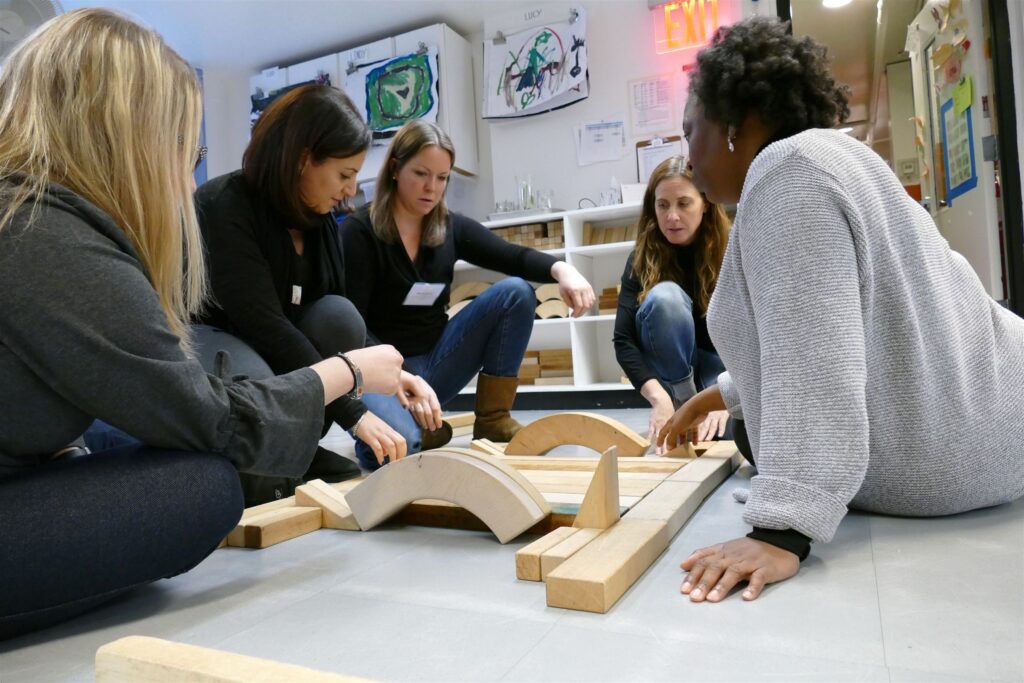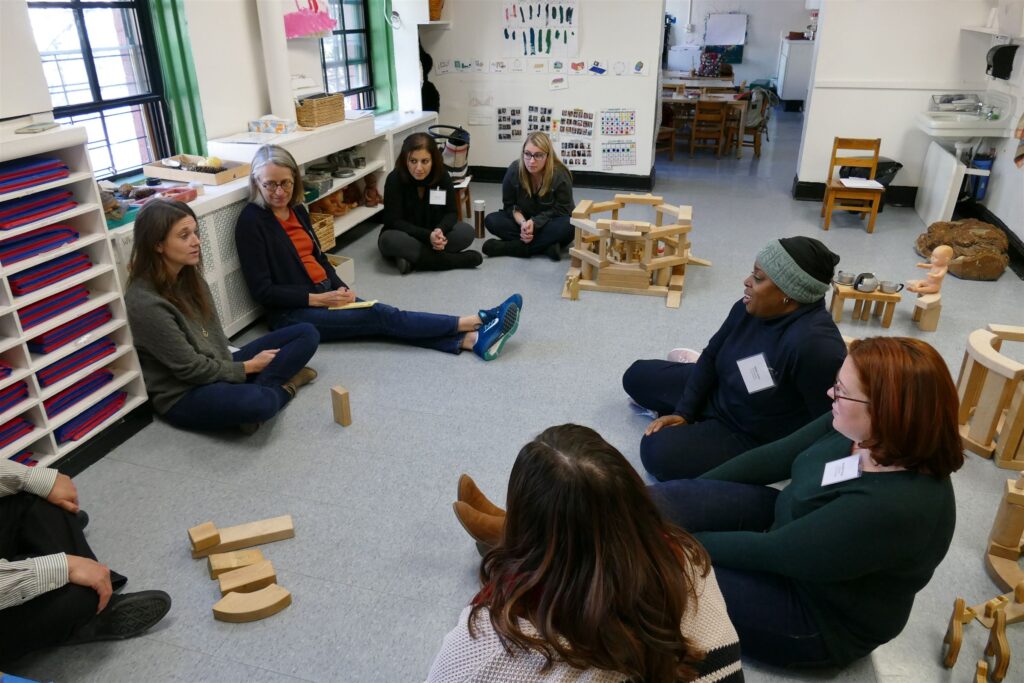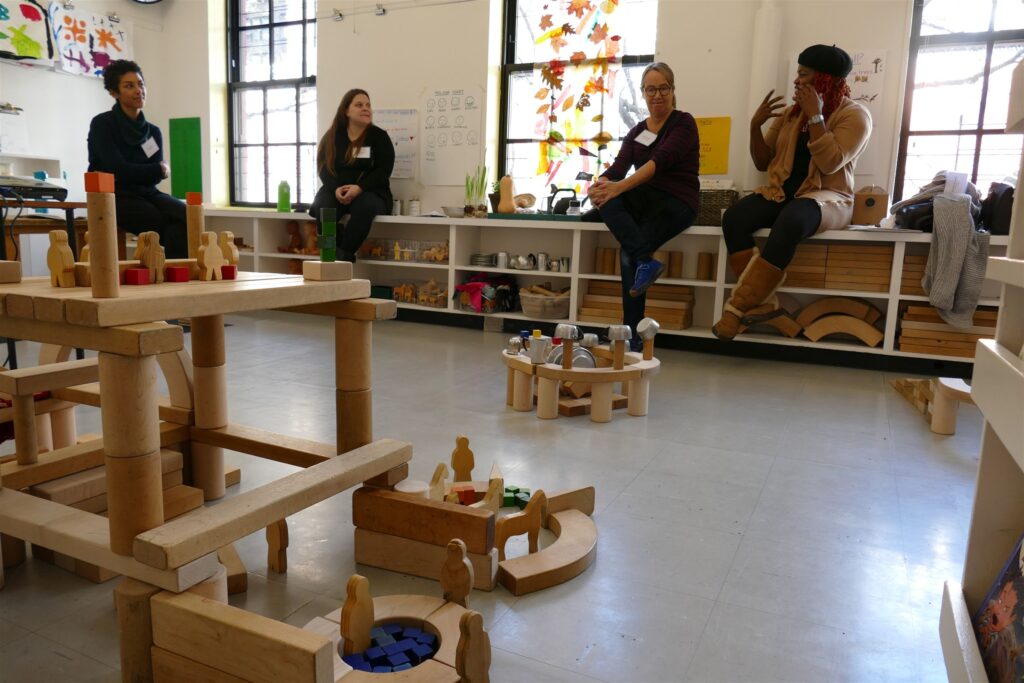Physical Blocks and Virtual Connections: Expanding Educator Outreach and Reimagining a Blocks Program Through Remote Learning
1/26/2021
By Jane Clarke, Director of Lower School
If someone had told our founder, Caroline Pratt, that children would be learning apart from one another in 2020, she would have expressed deep concern. Pratt believed that learning was a fundamentally social process. Her educational philosophy centered around the idea that children benefit most when they work together to learn more about each other and the world around them, and through that process, themselves. C&C educators today—106 years after the school was founded—still hold a deep belief in that core principle.
When the COVID-19 pandemic caused C&C, like so many schools around the world, to transition into fully remote learning, it raised a number of questions—not the least of which was, “How can we recreate the social-based learning that is the bedrock of our school?” The answer is still unfolding; for all of the many challenges posed by moving to a “Virtual C&C,” there have also been many opportunities that our educators can, and do, seize upon.
One great opportunity presented by remote learning: The pandemic has proven that technology can be used for a Virtual Block Connection and make lasting connections among our educators and educators from around the world.
C&C’s Foundation Is Built on Blocks
Caroline Pratt created the wooden unit blocks now used by so many schools, both in the US and internationally. Blocks, and the dramatic play that accompanies block building, offer children multiple and diverse opportunities to express their understanding of the social and physical world in which they live. From the early efforts of two- and three-year-olds to stack and balance blocks, to the dynamic communities of stores, services, and homes built by six- and seven-year-olds, children can experience a growing and vital sense of community. Working collaboratively to design complex block structures, children also learn to articulate their ideas confidently, to solve problems, to negotiate, and to cooperate.
The children at C&C use blocks daily, usually for small-scale work. Sometimes, blocks become the catalyst for much larger projects that run over the course of weeks and pull deeply from a number of other subjects. For instance, after the tragic fire at Notre Dame Cathedral in Paris, a group of Vs (kindergartners) began asking questions that led to a larger research project. Their in-depth learning eventually allowed the children to come together and build a scale model of the cathedral using blocks. The build bolstered their Math curriculum; they explored Music, Art, History, and Social Studies age-appropriately; and they used critical thinking and problem-solving skills at a level beyond their peers at most other schools.
Virtual C&C Without Virtual Blocks
In the spring of 2020, when all teaching was happening remotely, teachers looked for new ways to recreate the social and collaborative nature of block work. While there was still a yearning for the dependability of simple wooden building blocks, the core of the process—learning, recreating, exploring, understanding—was maintained through the use of other open-ended materials.
Our seven-year-olds each created a structure made from recycled materials as part of their collective work of designing a city. I was witness to three children sharing their creations. The transition into exchanging their play scenarios through the screen was fascinating to observe. The play was fluid, exciting, dramatic, and fun.
This year, although our Lower School students have been able to spend time in the classrooms, we wanted to ensure our students would have access to blocks whether at home or at school. Each student was provided with a set of mini wooden unit blocks, one quarter the size of their classroom blocks, for use at home. These materials will be one more way to help generate the profound sense of community and deep understanding that comes from the spontaneous exchange, playfulness, and collective problem solving our teachers help foster in our classrooms.
Block Connection—In Person and Online
Although C&C educators are questioning if the appropriate technology could be found that would allow for a developmentally appropriate virtual block building set—one the children could use to move the blocks around on-screen together—the proper technology for a true Virtual Blocks Program does not yet exist. However, now that our educators are familiar and comfortable with the distance learning technology that is available to them, we look forward to using it to help train more teachers through our Block Connection program.
C&C began the Block Connection initiative 14 years ago, fulfilling Caroline Pratt’s vision of making a real change in how all children are taught, and bringing her approach to education to schools across New York City. Through the initiative, C&C’s innovative faculty have shared their passion and enthusiasm for children’s block work. We have extensively and successfully partnered with PS 38, PS 130, and PS 261 in Brooklyn, the Sicomac School in New Jersey, and with many other public schools on a smaller scale through Block Connection workshops. Block Connection has also reached international educators from countries including Iceland, Jamaica, Russia, and Canada.
Shortly before this extended period of virtual learning, we hosted a series of in-person gatherings of educators at City and Country School, sponsored by a grant from the Tietz Family Foundation. The Foundation is dedicated to bringing about real, lasting changes to the American educational system with a focus on a “common-sense approach” to education. The core belief of the foundation is that all kids can learn, and that all teachers and administrators can find a pathway, if they are given access to the right tools and resources.
The Tietz Family Foundation grant allowed us to create a two-part program: The Block Connection Principals’ Breakfast, a chance for school leaders to visit C&C and learn firsthand about Block Connection, followed by the Block Connection Conference, a free day-long series of workshops lead by eight C&C teachers that introduced public school teachers to our program. Educators returned to their schools inspired and equipped with new ideas to incorporate into their classrooms.
This successful partnership between C&C and the Tietz Family Foundation continued with a second grant. The grant allowed for the production of a video that acts as a centerpiece for a new “digital toolbox” to help educators gain a clearer picture of the Blocks Program and its benefits. We have since determined that the next step for Block Connection is a further expansion of Block Connection online, but one with an interactive component. Thanks to our experience with Virtual C&C, we now have a clear understanding of what kinds of connections are possible online.
This may include C&C sending block sets to educators at public schools around the country and then engaging with them via Zoom. Not only would our busy educators not have to travel, they would also be able to connect with several schools at once—and those schools could connect with each other as they grew into designing and implementing their own Blocks Program. It would be a wonderful way to prove the universality of the program in real time.
Caroline Pratt’s Vision of the Future
When Caroline Pratt offered up her vision for C&C, it was a vision of the future. Caroline was smart enough to realize that her philosophy would need to change with the times. As such, the program has lasted 106 years. At the same time, I can’t imagine that Caroline envisioned a future where children were forced to work apart—during a year that included a pandemic, financial crisis, and protests highlighting the deep divides in our country. It lands squarely on C&C educators in times of crisis to come up with solutions with her legacy in mind. A quote from a former teacher recently reminded me of the history of our educators coming together in crisis:
“Every emergency situation to face implies extra meetings, extra thinking, and extra work for classroom teachers. The result has been a new outburst of initiative and vitality throughout the school, affecting all of us, including children and parents as well as teachers.”
—C&C educator Leila V Stott, “Teachers in Wartime,” 1943
To see that cooperation in our current educators as we structured Virtual C&C—in a time of crisis, with technology that’s not quite ready for our program—has been nothing short of inspiring.
City and Country School is lucky to have a program that is flexible enough—and teachers who are willing enough—to evolve how we teach outside educators about the Blocks Program. We continue to overcome the challenges and grow with the opportunities in Virtual C&C, knowing that this will not last forever. Once everyone is back in their classrooms full time, we look forward to using all we have learned to share our deep knowledge of how to engage children with blocks and other open-ended materials through our Virtual Block Connection program.
Learn more about the founding of C&C and Caroline Pratt’s philosophy through her memoir, I Learn from Children, available for free via Audible.



